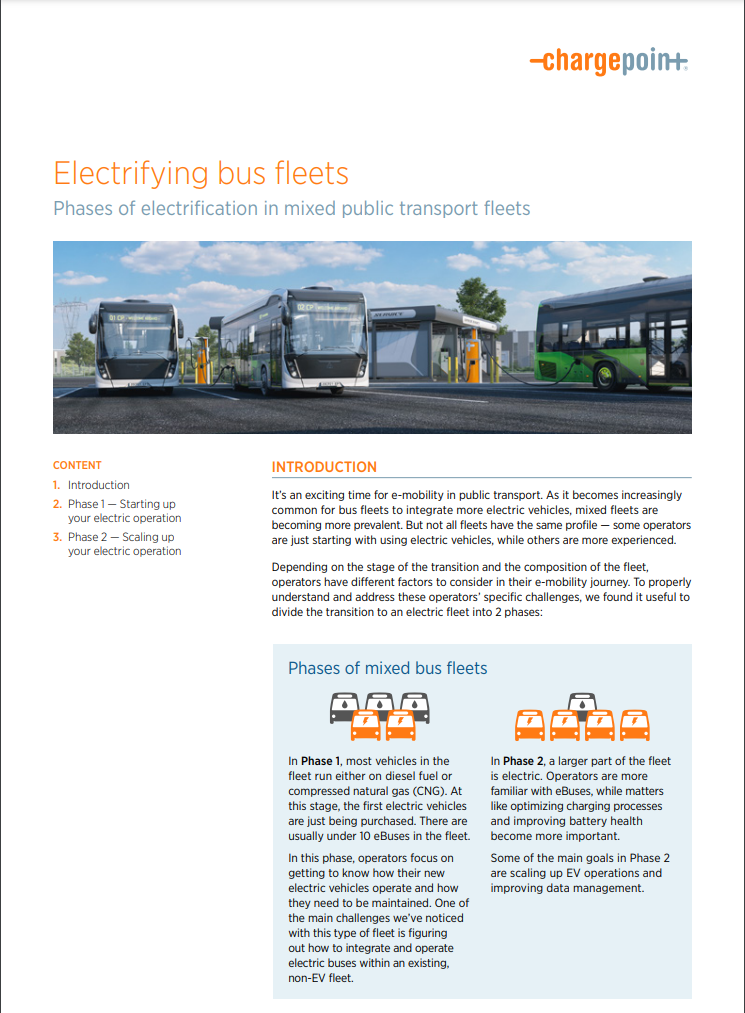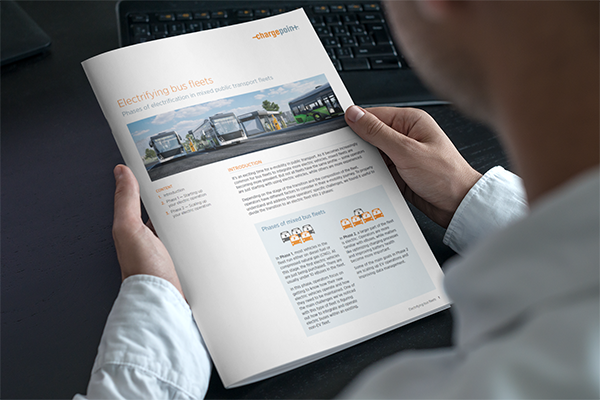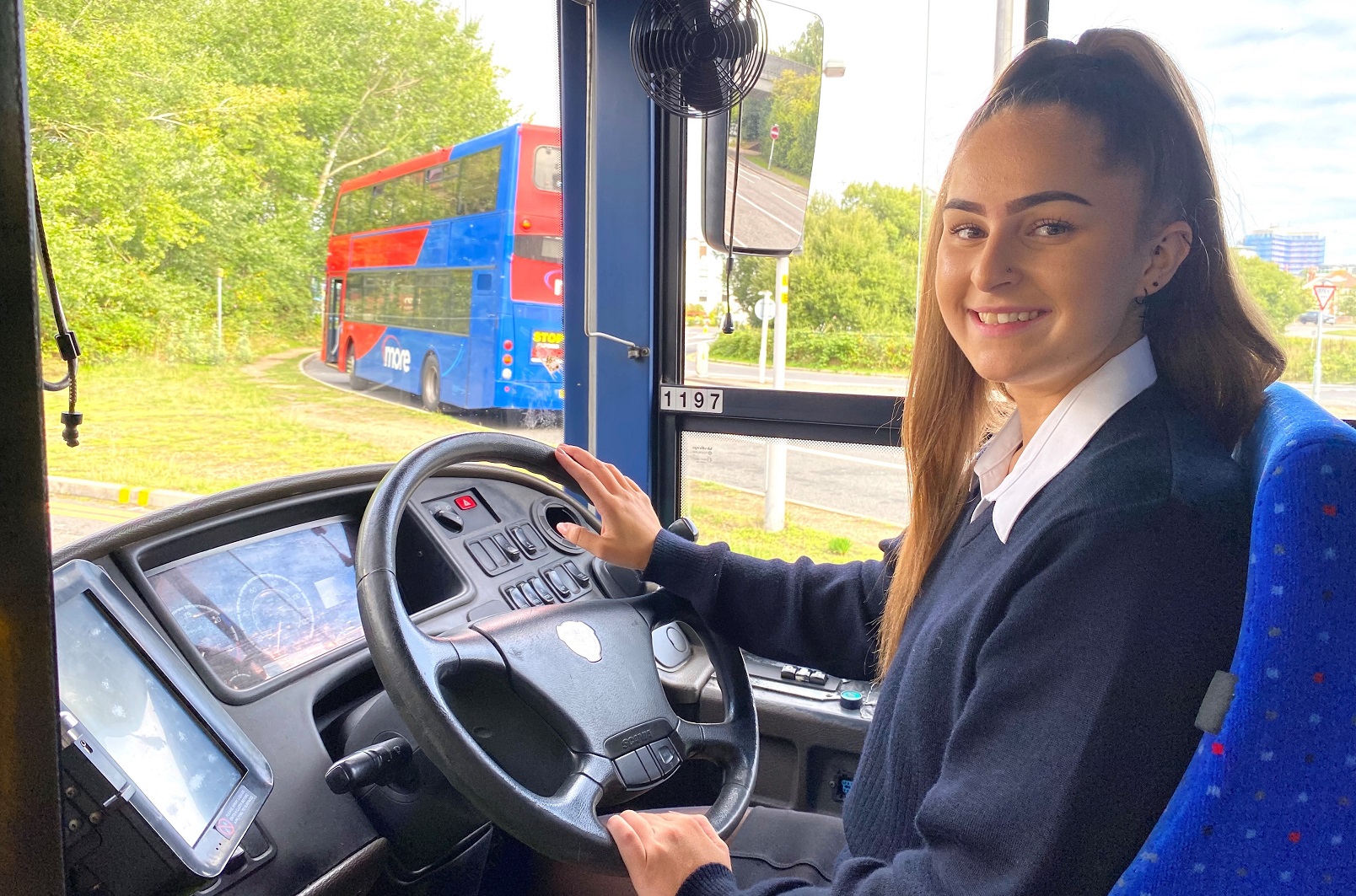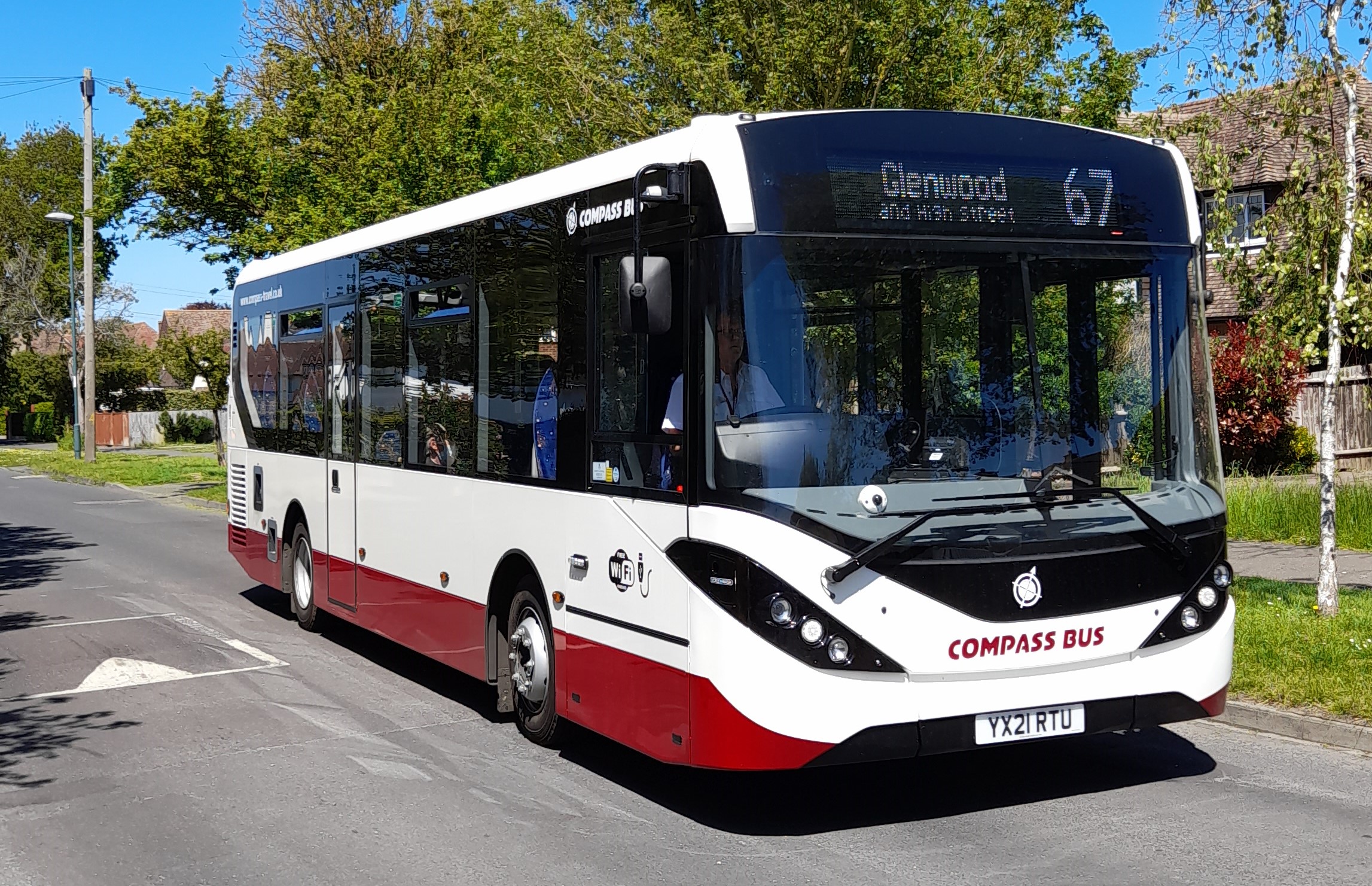This article is presented by ChargePoint, your partner in bus fleet electrification.
In the last 10 years, ChargePoint has helped hundreds of public transport operators electrify their bus fleets. This experience taught us that the transition doesn’t happen all at once, but rather in two phases. Depending on the transition phase and fleet composition, operators have different factors to consider in their e-mobility journey.
Let’s take a look at the characteristics of each phase and the main factors to consider when operating your e-fleet in phases 1 and 2. For an even more in-depth look, check out our free whitepaper, Electrifying Bus Fleets.

In this phase, operators focus on getting to know how their new electric vehicles operate and how they need to be maintained. One of the main challenges we’ve noticed with this type of fleet is figuring out how to integrate and operate electric buses within an existing, non-EV fleet.
Phase 2: In phase 2, a larger part of the fleet is electric. Operators are more familiar with eBuses, while matters like optimizing charging processes and improving battery health become more important.
Some of the typical challenges in phase 2 are how to secure operations while scaling up and how data can be implemented to overcome these challenges in this phase, in addition to all phases of EV development.
Management of a mixed bus fleet
When it comes to the management of a mixed fleet, there are several aspects to take into consideration. For simplicity, we divided these into three categories: energy management, power management and maintenance. What does all this mean for you? To make it easier, we delve deeper and unpack these categories based on the electrification stage.
Energy management
In phase 1, range anxiety is one of the main issues that operators face. In terms of energy management, it is important to understand how external factors affect the range of your buses.
Tip: The operations team should be responsible for monitoring the range, as this basic data set is essential to operate new EVs.
In phase 2 the range behavior is understood and the driving behavior becomes more important as the EV fleet grows. Monitoring your drivers’ behavior can help pinpoint the aspects they can improve for maximum efficiency.
Additionally, when it comes to scaling your fleet, it generally means there are now several OEMs who likely have different range calculations and performance.
Tip: The key takeaway is to make sure you have the same data basis to avoid conflicts in range calculations and performance from the different OEMs.
Power management
When it comes to charging your new electric buses, one of the decisions that need to be made is whether to use depot charging or opportunity charging. It’s also important to understand the energy bills involved.
In phase 1, unmanaged processes are generally sufficient so smart charging is not necessary. However, it is recommended to have a charging station monitoring tool in place. In phase 2, however, more factors are becoming important such as peak demand charges and day/night tariffs. Managed charging processes are essential at this point.
Tip: You should consider using a managed charging process such as smart charging, which allows you to lower charging costs and avoid peak demand charges.
Maintenance
In phase 1, maintenance teams must understand the state of the battery. The battery is a complex system consisting of hundreds of cells. And the weakest cell/module sets the limitations of the battery.
Tip: Monitoring battery technology becomes an essential part of the maintenance tasks for maintaining battery health.
As battery degradation strongly affects the overall fleet performance, it’s important that in phase 2 operators monitor the degradation and state of health of bus batteries. Maintaining battery health is crucial at this phase. The battery is one of the largest investments in your EVs.
White Paper | Electrifying Bus Fleets




























